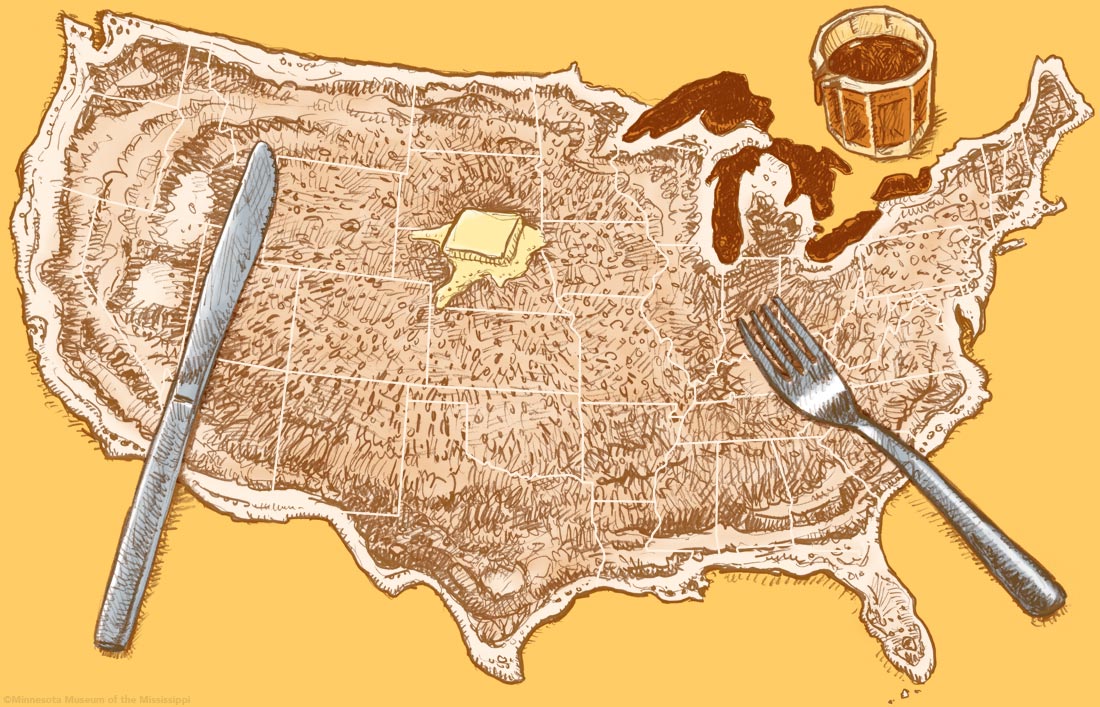
Imagine yourself sitting in a small cafe in a strange town somewhere in America. It's time for breakfast.
You scan a menu of familiar and predictable entrees. The waitress notes your selection and takes the slip of paper to the kitchen. Then comes the waiting. Hunger and sleepiness put you in a distracted frame of mind. Your gaze gets lost momentarily in the criscross of telephone wires out the window. You eavesdrop on local gossip that doesn't make sense. Note the promenade of morning commuters on the highway. Read a few lines from a local paper sitting on the counter. Through a door to the kitchen you glimpse the cooks shouting and flailing spatulae, but when will they finish your order? Your thoughts disconnect in hungry delusions.
At last the waitress emerges from the kitchen with a plate in hand, like some oracle priestess of the Vulcan-Hart grill which is the origin of all breakfasts. She sets the platter before you. You take fork in hand and are about to be dive in. But first, consider for a moment the mystery of the image which is before you. Look closely at this creation. Wander awhile in its microcosmic topography. The scribblings and tracings of the bubbles and batter remind you of a map of a place you've visited before. Or, like the scattering of coffee grounds in a fortune-teller's cup, perhaps it is a glimpse of your next destination.
From the Griddle
The first pancake was enjoyed by our ancestors thousands of years ago. In its most basic form, the pancake is simply a batter made of starchy flour and liquid cooked on a flat surface with a small amount of fat. Pancakes of all sorts are made around the world, but the breakfast pancake served with syrup is an American invention. The pannenkoeken made by the Dutch settlers of New Amsterdam and early English flapjacks melded with Native American cornmeal Johnnycakes to create a wide variety of pancake recipes depending on available ingredients. George Washington is said to have enjoyed hoe cakes for breakfast smothered in honey. In the nineteenth century, pancakes fed miners and lumberjacks in workplace cook shacks and cafeterias. The proletarian pancake remains a cheap and filling way to feed five or five thousand at community pancake breakfasts. They are a comfort food enjoyed by hungry children as well as adults.
In the early twentienth century, the popularity of rail and road travel supported informal roadside eateries which could serve quick meals to travelers away from home. Roadside restaurants and cafes based their menus around easy meals which could be cooked to order on a flat-top grill, such as pork chops and hamburger steaks, along with bowls of soup and slices of pre-baked pies. And for breakfast: eggs, ham, hashed potatoes and pancakes. From before sliced bread was invented in 1928 and before other modern diner staples such as Reuben sandwiches, Caesar salads, patty melts and Denver omelets existed, the pancake has long been a popular meal for breakfast or a late-night repast. Flapjacks, griddle cakes, short stacks and hot cakes in a hundred recipes can be found in all corners of America, wherever there are roads and restaurants or just a stove and spatula.
Recommended Selections
The hungry pancake artist roams from Missouri to Maine to Montana drawing breakfast - Gallery 1 | 2 | 3 | 4
Follow the numbers to paint your own pancake masterpiece.
See Pancakes Across America locations in Google Maps
